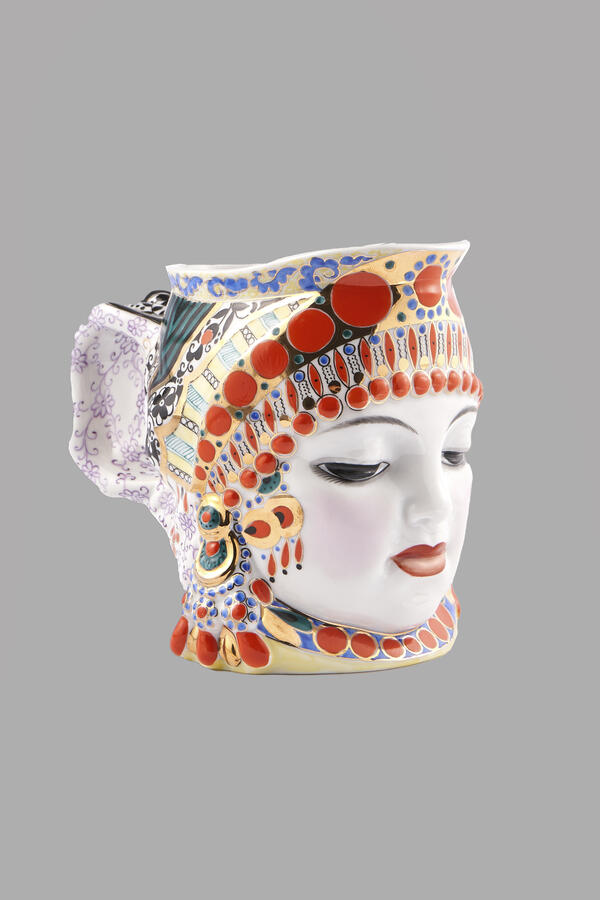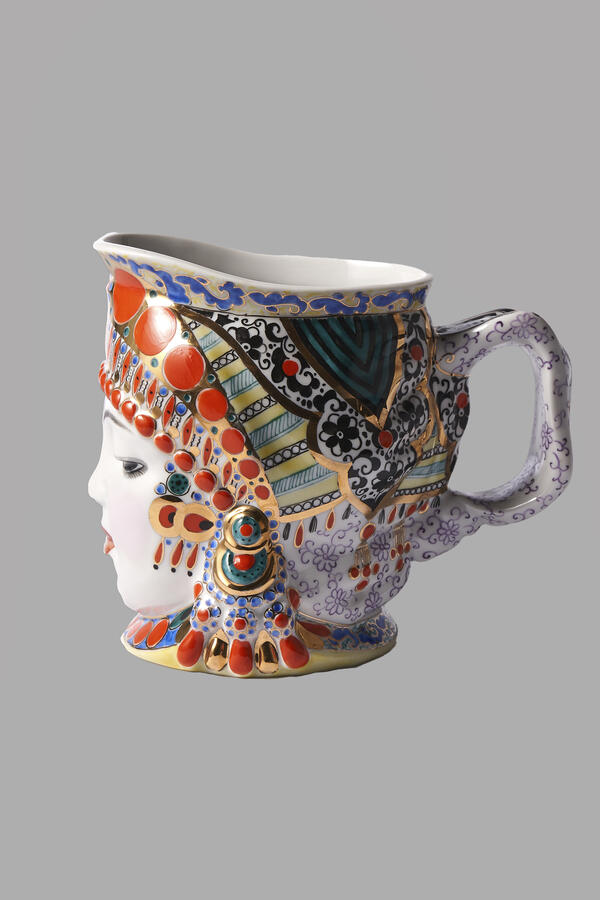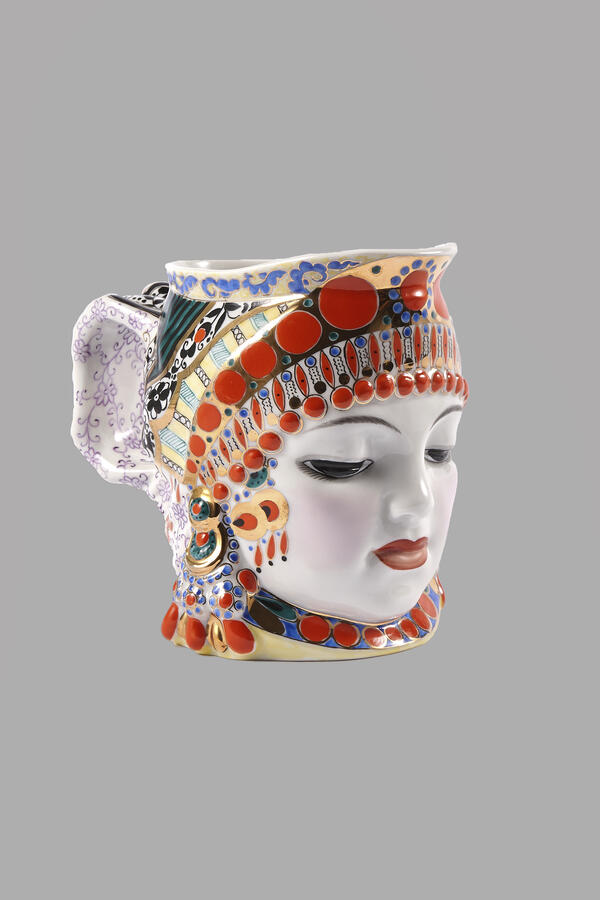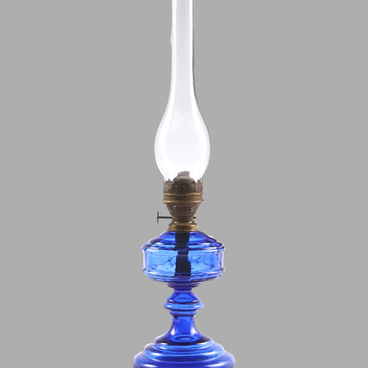An interesting product of the Lomonosov Porcelain Factory (LFZ) is presented in the interior of the writer Fyodor Vasilyevich Gladkov. It is a mug (milk jug) with the face of a girl in a national headdress.
The decorative mug LFZ “Milk” was released in memory of the famous sculptor Natalya Yakovlevna Danko. The sculptor designed the model in 1919 and it became her most famous work.
In addition to LFZ, at least five more factories produced milk jugs in the shape of an Asian woman’s head. Those were the Tuymazinsky Porcelain and Tuymazinsky Medical Glass Factory, the Tbilisi Ceramic Plant, the Kislovodsk Porcelain Factory, NPO Elektrokeramika in Leningrad, and the Velikoluksky Electrotechnical Porcelain Factory.
The handle of the mug is massive, the edge is straight, the body is oval-shaped, and the bottom is flat. The mug is painted in a fabulous, almost fantastic manner characteristic of the artist Alexey Viktorovich Vorobyovsky. The painting features elegant thin brushstrokes that remind of the world of Persian miniatures. The mug’s design — a woman’s face — clearly has Asian features: a slit of closed eyes, black thin crescent-shaped eyebrows, a bright headdress, and rich colors.
The mug is known in many pictorial versions, has many repetitions and almost always becomes the first item in the collection of a novice collector of LFZ products.
The world-famous plant was founded in 1744 by the order of Empress Elizaveta Petrovna. It was originally called the Nevsky Porcelain Factory, from 1765 — the Imperial Porcelain Factory, from 1917 — the State Porcelain Factory, in 1925 the factory was named after M.V. Lomonosov to commemorate the 200th anniversary of the Russian Academy of Sciences. In 2005, the factory changed its name to the Imperial Porcelain Factory. For a long time, the factory used a brand in the form of three interlaced letters — LFZ. Since 1991, an inscription has appeared under the abbreviation: Made in Russia. Currently, the plant uses a maker’s mark, which features a blue double-headed eagle.
The decorative mug LFZ “Milk” was released in memory of the famous sculptor Natalya Yakovlevna Danko. The sculptor designed the model in 1919 and it became her most famous work.
In addition to LFZ, at least five more factories produced milk jugs in the shape of an Asian woman’s head. Those were the Tuymazinsky Porcelain and Tuymazinsky Medical Glass Factory, the Tbilisi Ceramic Plant, the Kislovodsk Porcelain Factory, NPO Elektrokeramika in Leningrad, and the Velikoluksky Electrotechnical Porcelain Factory.
The handle of the mug is massive, the edge is straight, the body is oval-shaped, and the bottom is flat. The mug is painted in a fabulous, almost fantastic manner characteristic of the artist Alexey Viktorovich Vorobyovsky. The painting features elegant thin brushstrokes that remind of the world of Persian miniatures. The mug’s design — a woman’s face — clearly has Asian features: a slit of closed eyes, black thin crescent-shaped eyebrows, a bright headdress, and rich colors.
The mug is known in many pictorial versions, has many repetitions and almost always becomes the first item in the collection of a novice collector of LFZ products.
The world-famous plant was founded in 1744 by the order of Empress Elizaveta Petrovna. It was originally called the Nevsky Porcelain Factory, from 1765 — the Imperial Porcelain Factory, from 1917 — the State Porcelain Factory, in 1925 the factory was named after M.V. Lomonosov to commemorate the 200th anniversary of the Russian Academy of Sciences. In 2005, the factory changed its name to the Imperial Porcelain Factory. For a long time, the factory used a brand in the form of three interlaced letters — LFZ. Since 1991, an inscription has appeared under the abbreviation: Made in Russia. Currently, the plant uses a maker’s mark, which features a blue double-headed eagle.







